Now we come to the top 10 books in my list of memorable reading moments. I wanted to say a bit more with these, so I’ve split the ten in half. The top 5 will be up next Sunday, but for now, please enjoy numbers 10 through to 6. These are all books I have never forgotten, and doubt I ever will.
You can also catch up on previous instalments of this project here: 50-41, 40-31, 30-21, 20-11.
10. The Buddha in the Attic by Julie Otsuka (2011)
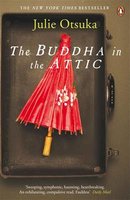
I first came across Julie Otsuka’s work in the pages of Granta: a story called ‘Diem Perdidi‘. It was about a woman with dementia, and I felt it depicted the process of loss vividly, the gradual chipping away of its protagonist’s memory. I wanted to read more.
So I tried this short historical novel and what a book it turned out to be. It follows a group of Japanese women sent to the USA as ‘picture brides’ at the start of the 20th century. Mostly, the American dream does not work out for them.
What makes Otsuka’s novel so distinctive is that it’s written in first-person plural: a chorus of ‘we’ that speaks for all the women and none. The focus zooms in and out, from broader trends to individual experiences, and back again. Like Reservoir 13 last week, there’s a music to the way the author weaves together these different perspectives. The voice of The Buddha in the Attic has never left me.
9. New Model Army by Adam Roberts (2010)
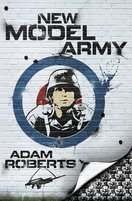
I’ve been a reader of science fiction and fantasy for most of my life, but Adam Roberts is someone I only really started reading in the last ten years. I don’t think I would have been ready for his singularly playful take on SF before then. Now, though… now, I know that I like what he does – but putting my response into words has often been difficult, in the best way.
New Model Army is a case in point. When I reached the end, I had a strong feeling inside – but I had no name for that feeling. I had been affected deeply, but I couldn’t describe how.
The novel is about the rise of private armies linked together by wikis, who make decisions according to majority vote. The narrative voice traps you in the perspective of a soldier whose individuality is subsumed into the group. The book’s final image comes straight back to me – I thought it was sublime, though I couldn’t visualise it.
8. Mr Fox by Helen Oyeyemi (2011)
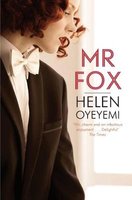
I think one of the things that drew me to reading fantasy in the first place was an interest in how stories shape the world (or how we shape the world into stories). My tastes have changed a bit over the years, but this thread is still there. Rarely has it led to as strong a reading experience as Helen Oyeyemi’s Mr Fox.
This is the tale of a writer’s imaginary muse, who turns out to be not so imaginary. She takes her writer through a series of stories (variations on Bluebeard) intended to make him treat his female characters better. The sheer range of Mr Fox left an impression on me, the variety of scenarios (and voices) that Oyeyemi found for her protagonists. (I had read one of the book’s embedded stories previously, but the context of the novel transformed it.)
More than this was the sense that both characters find their way forward through story. Oyeyemi builds up her novel layer by layer, tale by tale: a dizzying rush that I couldn’t forget.
7. Hawthorn & Child by Keith Ridgway (2012)
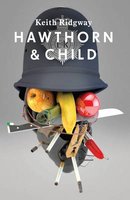
One of the changes in my reading tastes over the decade was that I started to appreciate fiction where the idea of story breaks down. Hawthorn & Child was an important stepping stone in that process. I’d seen John Self praising Keith Ridgway’s work, so I thought I’d give it a try (I loved the cover as well).
I have always thought of Hawthorn & Child as an ‘anti-detective novel’. If it can be said that a police investigation attempts to impose a shape on otherwise disconnected events, the coppers in this book do the opposite. The chapters can’t be trusted to cohere into a single narrative, and different possibilities are glimpsed and then vanish.
Hawthorn & Child showed me a different way to appreciate fiction. I’ve been following the path it set me on ever since.
6. The End of Days by Jenny Erpenbeck, tr. Susan Bernofsky (2014)
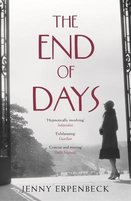
Like Fever Dream from my previous instalment, I found this novel though reading with the International Booker/Independent Foreign Fiction Prize shadow panel.
Have I ever read a book with a more powerful first page? It’s hard for me to think of one. Jenny Erpenbeck’s novel follows a woman born in the Austrian Empire at the start of the 20th century. In each chapter, she dies at a different point in her life. In the first chapter, she has died as a baby, and I just had to put the book down and steel myself after the opening sequence.
The rest of the novel shows how the individual interacts with broader history, as the woman’s life comes to mean something different in each iteration. Erpenbeck combines the personal with the grandly historical, in a way that comes right back to me as I write this.
14th June 2020 at 1:58 pm
Jenny Erpenbeck is one of my favorite writers, but it’s also great to see Adam Thorpe there. Yellow Blue Tibia is one of the fumiest books I’ve read, and New Model Army deserves its place – he seems to me under-rated both in s/f and literary fiction. Haven’t read Helen Oyeymi but I must rectify this.
20th June 2020 at 12:08 am
I agree, I don’t think Adam gets nearly the recognition he deserves. For me, he’s up there with Christopher Priest and M. John Harrison.
16th June 2020 at 11:03 am
I should read more Ridgway as I was equally impressed by Hawthorn & Child. John was right to champion it.
New Model Army I haven’t picked up yet as I have Yellow Blue Tibia still unread. I may give NMA a try first though then move on to Yellow. It really does sound very good (but then, most Adam Roberts do).
19th June 2020 at 11:58 pm
I haven’t read anything else by Ridgway, which I really should. I’ve got a copy of The Long Falling around here somewhere…
I would recommend Yellow Blue Tibia as well! I knew I was missing quite a few of the key references, but still loved it. I haven’t Roberts in too long either… I always meant to try The Thing Itself, which sounds fascinating.